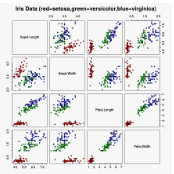In recent years, cross-spectral iris recognition has emerged as a promising biometric approach to establish the identity of individuals. However, matching iris images acquired at different spectral bands (i.e., matching a visible (VIS) iris probe to a gallery of near-infrared (NIR) iris images or vice versa) shows a significant performance degradation when compared to intraband NIR matching. Hence, in this paper, we have investigated a range of deep convolutional generative adversarial network (DCGAN) architectures to further improve the accuracy of cross-spectral iris recognition methods. Moreover, unlike the existing works in the literature, we introduce a resolution difference into the classical cross-spectral matching problem domain. We have developed two different techniques using the conditional generative adversarial network (cGAN) as a backbone architecture for cross-spectral iris matching. In the first approach, we simultaneously address the cross-resolution and cross-spectral matching problem by training a cGAN that jointly translates cross-resolution as well as cross-spectral tasks to the same resolution and within the same spectrum. In the second approach, we design a coupled generative adversarial network (cpGAN) architecture consisting of a pair of cGAN modules that project the VIS and NIR iris images into a low-dimensional embedding domain to ensure maximum pairwise similarity between the feature vectors from the two iris modalities of the same subject.
翻译:近些年来,跨光谱离子图像的识别已成为确定个人身份的一种很有希望的生物鉴别方法,但是,将不同频谱带(即将可见(VIS)离子探测器与近红外(NIR)离子图像相匹配或反之)获得的虹膜图像与近红外(NIR)离子图像相匹配的画廊相匹配,显示出显著的性能退化。因此,在本文件中,我们调查了一系列深层相振动基因对抗网络(DCGAN)结构,以进一步提高跨光谱离子识别方法的准确性。此外,与文献中的现有工作不同,我们将分辨率差异引入古典跨光谱匹配问题域相匹配问题域域域域(即将可见(VIS)探明性对抗性网络(cAN)作为跨光谱匹配的骨干结构。在第一个方法中,我们同时解决跨分辨率和跨光谱匹配问题,方法是培训一个共解析的cAN,将跨谱任务转化为同一分辨率和同一范围内的跨光谱任务。在第二个方法中,我们设计了典型跨域域域域域内,我们设计了一种匹配的域域域域内S-CROD-BIAN(VIAN)模板模型模型模型模型,将一个内,即基内,即基内,将一个基内基内基内基式的模型式的模型式的模型式的模型型模型型模型式的模型型模型,将一个基式的网络式网络式网络式网络式网络式网络式网络式网络式网络式网络式网络式网络式网络式网络式网络式网络式的模型,将一个比。





